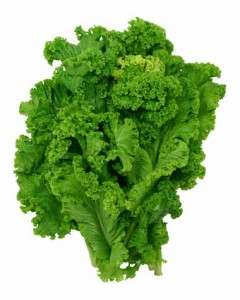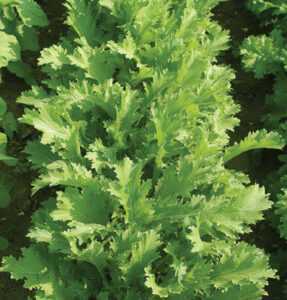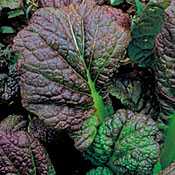Chubeza sends a hearty Mazal Tov to Shlomi, our driver to the merkaz area, whose daughter Gaya celebrated her Bat Mitzvah on Monday. Warm wishes from us all!
_______________________
“During the rainy season (winter), he should eat warm foods with spices and he should eat a small amount of mustard…” (Rambam, Mishne Torah, “Deot”)
Last month’s rains sprouted weeds galore. Dozens of wild greens pushed their way out of the dry end-of-summer earth to stubbornly sprout into verdant carpets. This week’s rains gave them another boost, and they will continue to grow and make our hearts merry. If you look around, you can already see nettles, little mallow plants (chubeza), many wood sorrels and of course, the king of weeds, the wild mustard!
In your boxes, you’re meeting three of his cultivated cousins: the red mustard (Osaka type), with soft leaves and a thick, dark purple spine; the flat green mustard, with light green leaves and fringed edges; and the light green frizzled mustard green, resembling lettuce. The two green-colored mustards have coarser leaves than the red variety.
To introduce them properly, here’s their snapshots: The Mustards (l to r) frizzled green, flat green, red
Last week, our colleague Lobsang left to India for a family visit. In discussing the current season in that part of the world, he mentioned mustard oil, which brought me to request an (exclusive!) interview about the process of producing mustard oil, in honor of Chanuka and the mustard season in our Chubeza boxes.
But before I tell you what he said, a short introduction: after Lobsang described the oil and its many uses in India, I conducted some research of my own. Turns out, the information is rather confusing. Some describe it as being pungent in taste and scent, while others (including Lobsang) describe the oil as being free of a mustardy taste. Some sing its praises as a healthy, medicinal aid (we’ll get to that), while others caution against its use for food and even massages. In short, a balagan! What I was able to understand regarding the food warning is that this oil is usually extracted from the wild mustard, which grows in many places together with a toxic plant called “Argamone Mexicana.” Apparently, there must have been cases in which both plants were picked and their combined seeds were pressed to extract the oil, which became toxic. Thus the danger was not the oil, but in the mixed seeds.
In Israel, mustard has been a popular wild plant for many years, known and used for many functions. It is mentioned in the Mishna in regard to culinary and medicinal issues, with its seeds being referred to as standard measures for weight or size. In the medicinal realm, mustard is called a positive plant, up to a point: “He who becomes accustomed to eating mustard every 30 days keeps illnesses out of his houses, but not every day, as it weakens the heart.” (Berakhot 40a). From a culinary point of view, however, it is considered a gourmet food fit for kings: “Priestly gifts are not devoured… only with mustard. ‘Make a paste out of it’ in the manner of kings.” (Perush HaMishna Chulin). On the other hand, it is handy for anyone who wishes to pick it: “Rabbi Yehoshua says: I never tire of telling a person: go out and glean for yourself stalks of mustard and pickle them and you shall be free of tithes.” (Tosefta, Ma’aser Rishon 3) I guess it was confusing back then as well.
So how does one extract mustard seed oil?
Let the mustard grow joyfully, as only it can do, for three to four months until the leaves begin to turn yellow and the seeds within the flowers are round and ripe, yet not completely dry. Then pick them, place on a very dense net, and drive right over them with a tractor. This action, somewhat like wheat threshing, separates the seeds from the flowers. Afterwards, remove the plants from the net, and only the seeds remain.
These seeds are not yet dry. It is important to remove them while still green. If you wait till they’re totally dry, they will separate and fall off the plants too easily even before they reach the net. Now, allow them to dry in the sun for another couple of weeks.
When dry, collect them in buckets and begin the pressing process. It is a cold- press, which does not use heating. Add three cups of water to every bucket placed in the pressing mill, to aid the crushing of the seeds. The mill itself is comprised of an elongated cylinder surrounded by an additional roll. The seeds are crushed and pressed in between the two. After the preliminary crushing, the mustard oil begins dripping through a strainer under the press and is gathered in a container. One bucket of mustard seeds produces 6-7 liters of oil.
On the other side of the press, a solid brick of the crushed mustard seeds is produced, which is repeatedly placed for additional pressing, until it is dry and hard as a rock. Lobsang calls this “the bread.” This bread is valuable and very useful (somewhat like the olive waste remaining after olive pressing). It is used to feed animals, and is considered a very valuable material. Many times the mill owner and the farmer make a deal, trading oil extraction for “the bread.” Three to four buckets of seeks will produce a by-product of some 5 kg of “bread.”
This is how the press looks:
Mustard seed oil is rich in healthy fatty acids, omega 3 and omega 6. It decreases the consumption of saturated fat and raises that of “the good fat” – mono unsaturated fatty acids, which are healthy and good for you. It is very popular in India, especially in the northern part, and in Nepal and Bangladesh. Here, it’s not as popular, but I did find a perfect recipe below for this time of the year that combines two cousins – broccoli and cauliflower. (Kibbutz Sde Eliyahu produces and markets organic mustard seed oil).
So may we all have a happy, joyful, radiant Festival of Lights, full of contrasts that glow peacefully alongside one another.
Alon, Bat Ami and the Chubeza team
________________________
WHAT’S IN THIS WEEK’S BOXES?
Monday: Sweet potatoes, arugula, green or red mustard greens, kohlrabi or fennel, broccoli, tomatoes, Dutch cucumbers, parsley, beets, lettuce, carrots
In the large box, in addition: cauliflower, celery, scallions
Wednesday: red leaf or romaine lettuce, kale or Swiss chard, arugula, cilantro, green or red cabbage, radishes, cucumbers, broccoli or cauliflower, tomatoes, carrots, kohlrabi or beets, white savory, thyme or dill
In the large box, in addition: sweet potatoes, celery. scallions or leeks
And there’s more! You can add to your basket a wide, delectable range of additional products from fine small producers: granola and cookies, flour, sprouts, goat dairies, fruits, honey, crackers, probiotic foods, dried fruits and leathers and organic olive oil too! You can learn more about each producer on the Chubeza website. The attached order form includes a detailed listing of the products and their cost. Fill it out, and send it back to us soon.
_________________________
RECIPES FROM THE MUSTARD FAMILY FILES
Broccoli and Cauliflower Stir-Fried in Mustard Oil (Erez Komrovsky)
Ingredients (4 portions)
1 head of broccoli ½ head of cauliflower 2-3 T. mustard oil 1 level T. crushed coriander seeds 5 scallions, thinly sliced 1 ripe lemon 1 hot red pepper, thinly sliced 1 T. cane sugar (or brown sugar) ½ c. pan-roasted shelled peanuts, coarsely chopped Coarse salt, to taste
Preparation: 1. Rinse broccoli and cauliflower well. Separate into small to medium-sized florets. Heat pan and add mustard oil. 2. When oil is heated almost to smoking, add coriander seeds and chili pepper. Add broccoli and cauliflower florets immediately. Stir-fry over high flame. After around 3 minutes, when the vegetables are slightly scorched, season with sugar, lemon juice and coarse sea salt to taste. 3. Continue cooking an additional 2-3 minutes, remove from heat, and garnish with chopped scallions and peanuts. Serve immediately.
Michal from Tel Aviv sent me this delicious recipe for turnips:




